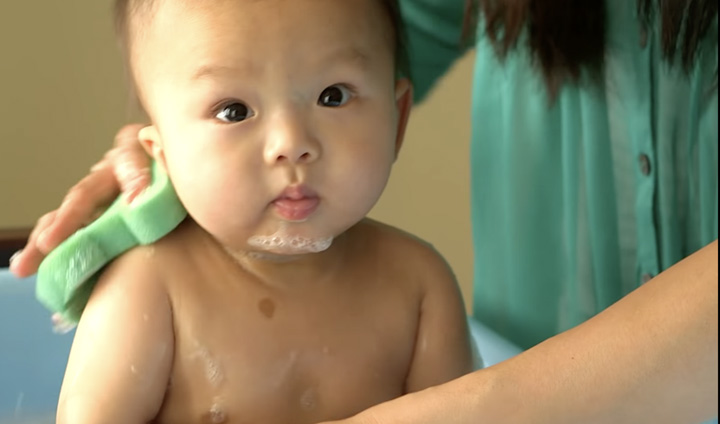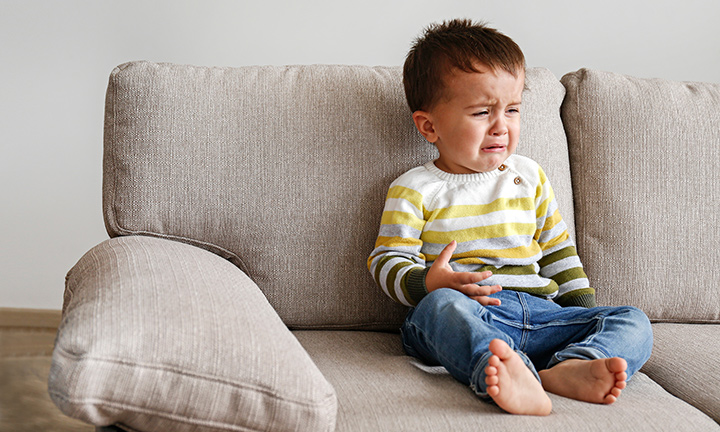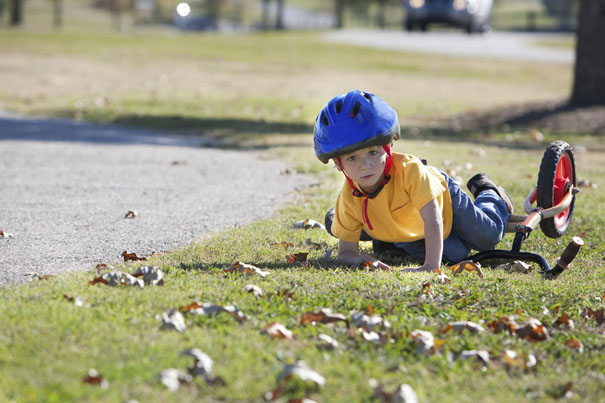
Toddler Bath Time: How to Help Your Child Love Baths
For many toddlers, having a bath and splashing around in the tub is a fun and relaxing part of their day. For other toddlers, bath time is not as appealing, especially as they develop their likes and dislikes, learn how to say “no,” and prefer to do things on their own. This is completely normal behavior, but it can sure make bath time a challenge! Read on to learn how to help your child enjoy taking a bath.
Why Kids May Not Like Taking Baths
It can be hard to understand what’s not to love about warm water, bubbles, and bath toys, not to mention having Mom or Dad’s undivided attention. Yet some young children—perhaps even your toddler—seem to have an aversion to bathing and bath time.
Here are a few common reasons kids dislike taking baths:
If you’re encountering strong opposition at bath time, experts recommend not forcing your child to take a bath. Instead, focus on being patient, getting to the root of the problem, and addressing your little one’s needs. When you understand the reason behind the aversion, it will be a lot easier to know how to get your baby or toddler to like baths!
In Summary
Toddler baths may be a challenge at times. The most common reasons include a toddler:
How Often Should Toddlers Bathe?
Deciding how often to bathe your toddler may depend in part on how sticky and dirty they get! But unless your little one is playing in the mud every day, bathing a toddler on a daily basis wouldn’t be necessary and may not be ideal, as kids have delicate skin that can become dry and irritated. Giving your toddler a bath two or three times a week is usually plenty. Of course, it’s OK to bathe more often as needed.
If your toddler puts up a fight at bath time, it’s better not to insist, even if that means less frequent bathing. A quick sponge bath or wiping your toddler with a soapy washcloth will work until they get used to baths.
Tip
Aim for two or three baths each week and try to schedule them consistently so your toddler knows when to expect them. If your child gets dirtier than usual one day, just add another bath to the schedule.
How to Make Bath Time for Kids More Fun
Whether your toddler loves or hates bath time, you can take advantage of these tips and tricks on how to make it more fun for all. When bath time doesn’t feel like a chore or obligation, there’s a better chance that children will embrace it—and getting your toddler to take a bath becomes a lot easier. You’ll find a few of our best strategies below.
Include Bath Toys or Music
Bringing toys into your toddler’s bath is the oldest trick in the book, and it works. Kids love splashing around at bath time, and it’s even more enjoyable if you plop some boats, animals, squirters, cups, dolls, letters, or balls into the water and play some lively tunes.
When choosing bath toys, look for nontoxic, water-friendly varieties that are made with plastic and without holes, if possible. Mold, bacteria, or fungus can grow inside toys or along creases, so solid toys are best. Set the toys out to dry after every bath and store them away from the tub in between bath times.
Tip
Use bath books or plastic learning toys like letters or numbers to make bath time both fun and educational!
Let Your Toddler Take the Lead
Giving your child some control over bath time may make it more enjoyable. Let your little one choose which bubbles to use, or squeeze the shampoo bottle, or use the washcloth without your help. Letting toddlers make decisions and do things on their own, such as when getting dressed or at bath time, helps boost their confidence and encourages their emerging self care skills and independence.
Include Pretend Play
Providing toys during bath time is a game changer for toddlers, but play (and especially pretend play and any kind of unstructured play) is also essential for your little one’s overall development, as toddlers learn through play. Why not encourage it in the tub? Some ideas for pretend play in the bath include
The options for pretend play are endless when you let your toddler’s imagination lead the way!
Tip
If your kids don’t like taking baths, use pretend play to understand why. Ask your children to act out a baby taking a bath and see how they present the process. Perhaps your little one will reveal what makes them feel uncomfortable. If nothing comes up, try some bathtub entertainment. Make your kids laugh by pretending to take a “silly” bath so they know that bath time is fun.
Use Bath Paints
If you think toys will make your toddler love taking a bath, get ready for the power of bath paints! That’s right—painting in the bath. Let your little one paint on their body or the tub, then wash everything off during the bath. Not only is it fun for your child, but it’s also easy to clean! (Note: Be sure to test the bathroom grout for staining before the art session begins!)
You can buy these paints from baby or craft stores or you can also make them yourself using water, food coloring, cornstarch, and soap. Bath paints help make bath time for toddlers a lot more fun, but they also provide a sly distraction if your child protests getting in the tub. Every toddler loves an opportunity to get messy!
Tackle Concerns or Needs Early
As mentioned above, there may be a reason why your toddler dislikes or resists bath time. Ask them what they don’t like or what could make it better. If your little one can’t quite articulate their feelings, observe them and see if you can get to the bottom of it. Does your toddler hate being cold or wet in general or did something scary happen involving water?
Once you know what’s going on, you can start to address your toddler’s needs by adjusting the bath routine. If your little one hates being cold, check the water temperature often or use a towel heater to make sure it’s nice and cozy when out of the tub. If your child hates getting their hair washed, let them help you scrub or distract them with some toys.
Add Bath Time to Your Routine
Kids thrive with structure and order, so if you make bath time part of their daily or nightly bedtime on certain days (say, every Monday, Wednesday, and Friday, for example), it may help your child embrace it. Your little one will know to expect it, and that could make all the difference. If you bathe your child in the evening, a calming bath and bedtime routine can also help your toddler sleep better—a win-win!
In Summary
With a little help, bath time can be fun for toddlers! Use toys, music, books, paints, learning tools, or pretend play to make what some see as a chore feel more like a fun activity. Keep bath time consistent so your toddler knows when it’s coming and address any concerns from the start.
Bathtub Safety for Toddlers
How you bathe your toddler has a lot to do with bathtub safety for kids. Children need constant supervision when they’re in or around water, so take these safety tips into consideration when it’s bath time:
If you have any questions or concerns about your kids taking a bath, contact your child’s healthcare provider, who is there to support you in all parts of your parenthood journey.
In Summary
Children need constant supervision, especially around water. Be sure to never leave your curious toddler alone at bath time, not even for a few seconds. Other ways to ensure bathtub safety for toddlers include:
How to Give a Toddler a Bath
Bathing a toddler is a little different than bathing a baby or newborn, but some details are similar. Follow the steps below to better understand how to give your toddler a bath, making use of the tips above as needed to help get your growing and opinionated baby to like baths!
And that’s it! Bathing a toddler isn’t difficult, though it can get tricky if your little one objects. A little preparation and some fun can make everything go more smoothly.
In Summary
Giving your toddler a bath is quite simple but may become more challenging if they start to protest. Preparation is key, along with adding fun activities to bath time (toys, play, music, etc.), keeping your little one warm, washing gently, and drying off quickly.
FAQs at a Glance
Bathing a toddler is very similar to bathing a baby, but you don’t have to hold them, and you can use a regular bathtub. Prepare beforehand to avoid interruption and be sure to never leave your toddler alone in the bath or unsupervised.
Other tips for bathing your toddler include keeping the water temperature at about 100 degrees Fahrenheit, washing gently with a washcloth and baby-safe soap, using toys or pretend play to make the process fun, and drying off quickly to stay warm.
The Bottom Line
Learning how to get your baby or toddler to like baths can be a tricky process but one that’s certainly doable. Toddlers may resist bath time for various reasons, but adding toys, play, a routine, or music—or giving your little one some control over bathing—can make all the difference. Before long, you’ll be on your way to fun-filled splishing and splashing!
Remember that your child is developing, and that some of these behaviors, like deciding what they like and saying “no” whenever possible, are just part of growing up. Read more about toddler development milestones to know what else is on the way! If you need a little encouragement, boost your mood by earning rewards and Pampers Cash by downloading the Pampers Rewards App!
Read more about Toddler
Related Articles
Join a World of Support
through Pregnancy and Parenthood.
TRACK WITH TOOLS
LEARN WITH EXPERTS
GET REWARDED








